|
So for the final days of March I decided to head home and thus this meant that I had some time to visit both Totteridge Valley and also Rainham Marshes for the in over a Month. And so on Wednesday morning I decided to head up to Totteridge. I headed up via Finchley Golf Course and to my surprise I found a pair of Treecreeper excavating a nesting sight behind some bark on a massive oak tree. One would always be standing guard while the other went in to make sure everything was in tip top condition and they had to stand guard since there were to other species nesting in the same tree. With Blue Tits and Great Tits going in and out of natural holes in the tree above the Treecreepers. Above: Treecreeper I then headed up into the valley via Frith Lane and Partingdale Lane where the first Chiffchaff and Blackcap were in song as well as the first Small/ Cabbage White Butterflies feeding on the blossom. I then continued down towards the Substation with parties of Meadow Pipits heading high over head on their way Northwards. Then all of a sudden I noticed a strange lump on a nearby log. It didn't take too long for me to realise what it was and as it flew up into the tree I could see that it was aware of my presence. It was infact one of the local Little Owls and it now marks the 3rd year in a row that I have seen this particular individual at this time of year. I love it when birds become reliable. Above: Little Owl Moving on into the valley further and the 1st Buzzards and Sparrowhawks of the day were seen soaring over old Gropper Field. Here it was great just to stop and listen to the sound of Chiffchaff and Blackcap song all around me. I decided to head up to Laurel Pond to see if the Firecrest had returned, but unfortunately the best I could find was a pair of Coal Tit adding the finishing touches to their new home. Next I headed for Darlands lake where the local Herons were soaring over head keeping the Buzzards company and ensuring that there was no encroachment on their territory. The Snakes Head Fritillary was in full bloom which was good to see and it reminded me of a carpet of bluebells. Several Teal were on the lake, however apart from the Lapwing at Folly Farm that was it bird wise. Above: Snakes Head Fritillary's The next day and afternoon visit to Totteridge seemed like the correct thing to do especially given the temperature. Peacock, and Small Tortoiseshell Butterflies were everywhere and one of my favourite fly species in the world were out in abundance. Of course it is the Bee-fly. Above: Bee-fly Moving further into the valley it was nice to be able to stand in the warm sun listening to the sound of the Blackcap and Chiffchaff, with a movement of raptors evident in the skies with both high flying Buzzard and Sparrowhawk flying through including the odd interesting bird that was just too high to identify any further. I had a quick look in John's field for a change and added yet more Blackcap and Chiffchaff as well as quite a few Small Tortoiseshell Butterflies. The Treecreeper was singing at Darlands Lake and at least 6 Teal were on the Lake with a double figure count of Mallard and 4 Moorhen, which is the most I have seen of all these species here for quite some time. Above: Drake Teal Next I headed out to Owl Field where I found not one but 2 pairs of Bullfinch with nesting material. A Male Reed Bunting also popped up unannounced and sat in a bush next to me and a Red Kite did the sensible thing and flew over my head. Unfortunately I found what it was looking at, as on the path ahead of me was a dead Mole. I have to admit this is the first time I had ever seen a Mole and I was surprised at just how strong its feet are and also how sharp their teeth are. This not so little fella looked as though it had been killed by a fox during the Spring dispersal as there were bite marks on its back, however after I left I am pretty sure that it became the Red Kites dinner. Above: Mole I continued down towards Folly Farm where the Lapwing were still present along with a few Meadow Pipit over head, however I was surprised to find not one but 2 Little Owl staring at me from a nearby tree which is quite incredible. Especially given that I had seen one the day before. These 2 however were quite clearly a pair and also they seemed to be making the most of the warm afternoon sun. Above: Little Owl I then decided to head for home, however as a parting gift the Long-tailed Tits near Lond Pond were showing well, a Red Kite was perched in a dead tree, and the pair of Egyptian Geese seem to have joined the Canada Geese, Coot, and Moorhen at Long Pond. While a Drake Mandarin also flew over head. What a day, and this is why I Love Totteridge... You never know what you are going to get. Above: Red Kite Below: Egyptian Goose Above: Canada Goose The next morning I got up at the crack of dawn and headed to RSPB Rainham Marshes. I arrived at Rainham North at just gone 06:45 and set about scanning the area. Cetti's Warbler and Chiffchaff could be heard singing and the first Blackcap of the day was also found near the A13. Moving on towards Rainham West and another 25 Cetti's Warbler were heard along with the odd seen as well. A male Pheasant scared the life out of me when it erupted from the undergrowth on the left hand side of the path and only just avoided making contact with my head as it ran to safety. Coot, Little Grebe, a pair of Tufted Duck and a few Shoveler were also about along with more Chiffchaff and Blackcap. A few Mute Swan also trundled through over head in the crisp but chilly blue sky. Moving on and I decided to give the stone barges a visit. Along the way I encountered yet more Blackcap and also even more Cetti's Warblers. Upon arrival at the barges I was scanning through a flock of Goldfinches when something spoked them. This was when I picked up a Weasel running along the wall below the bushes the Goldfinches had been in. What a sight this was to see and I watched as it continued running along the wall and then eventually disappearing into the undergrowth. Bird wise the barges were unusually quiet with a few Gadwall, Teal, Wigeon, and Shelduck the only things around in this unusually high tide. Above: Drake Teal Below: Drake Gadwall Moving on and with the temperature steadily rising the first Butterflies of the day started to emerge. I decided to take the path over the tip and although it was migrant less there were plenty of singing Skylark and Meadow Pipits around. Peacock Butterflies were also numerous and a few Hoverflies were about. Above: female Eupeodes luniger (Thank you Howard) Below: Peacock Butterfly I then headed down towards Aveley Bay where a few Linnet were about. In the Bay itself a Curlew, and Avocet could be seen amongst the Teal and Shelduck. I then headed down the lower path and flushed accidently flushed a lingering Water Pipit. From this angle I could also see that there were 2 Ringed Plover in the bay as well as a few Redshank, but no sign of any returning Terns or Whimbrel as of yet. Above: Linnet Below: Ringed Plover I then headed back to the visitor entre via a flock of loafing Wigeon and the first sign of a Raptor Movement as a flock of 4 circling Buzzards drifted over to Join the thermalling Marsh Harriers over Wennington. It was now nearing 10am and so after dropping my coat and Jumper, I headed out onto te reserve. I decided to head to Dents Drop first. From here I could see plenty of Redshank and a Curlew busily feeding at the back of the Pool. There was also still a good amount of Ducks around with Tufted Duck, Shoveler, Teal, Gadwall, Wigeon, and a pair of Pintail around the Pools. Upon closer inspection a few Snipe could also be seen along the back of the pool as well as some lurking Moorhen and Coot. Above: Jumping Spider sp Moving on into the Woodland where Cetti's Warblers, Blackcap and plenty of Chiffchaff were in full song, that was until not one, but 2 Female Sparrowhawks got up and started to circle the Woodland leaving everything quiet. Once they had passed the song started up again and this time it was the Goldfinch's turn to join the party. Above: Goldfinch Below: Female Sparrowhawk Moving on and the sound of Marsh Frogs had me peering over the board walk. To my surprise there was a total of 76 freshly emerged Marsh Frogs sitting out in the sun trying to warm up. It was an amazing sight to see and a real sign of Spring. After I had been standing here for a while I turned in the direction of the train line as a Male Sedge Warbler started to sign from the reeds. This was my first of the year and my earliest record by miles. More Cetti's Warbler sang as I headed towards the Ken Barret Hide, while above my head several Buzzard Passed through along with a high flying spec of a Peregrine. Above: Marsh Frogs Below: Common Buzzards The Ken Barret hide was relatively quiet with a few Pochard and Gadwall dotted around. A fine Male Marsh Harrier was hunting the Reedbeds to one side of the hide. However the best was yet to happen. I noticed the Great Crested Grebes in front of the hide had parted ways. This was until the second followed suite keeping low to the water and what happened next was truly wonderful to see and experience with the Grebes going into display mode mirroring each others moves. It was a spectacular to watch and I have a feeling that some of the others in the hide were feeling the same sense of excitement. I then headed up towards the Butt's Hide via the Northern Board Walk. Here is was relatively quiet with only a Reed Bunting and a Male Bearded Tit appearing. Cetti's Warblers were still numerous as ever and the Marsh Harriers performed well as they continued to defend their territory against the passing Buzzards. Just as I was about to enter the hide I heard a call that I hadn't heard for quite sometime. To my surprise when I looked up I picked up a pair of Little Ringed Plover coming in from quite a decent height and I watched as they headed towards the A13 before dropping down out of sight into the Reeds. These were my first of the year and it was great to see them back. Once in the Butt's Hide I had a look out onto Butt's Scrape. Here there was the usual mix of Tufted Duck and Pochard as well as quite a few Snipe out in the open feeding on the muddy islands in the middle of the pools. Shoveler, Lapwing, and Redshank were also dotted around the edges of the pools along with Greylag and Canada Geese. I then decided to have a look at Target Pools. This again brought up the same array of Species however there were still a few lingering Shelduck and Pintail on this side. A Ruff was also feeding along the back of the pools and a few Pied Wagtails were dotted around the marsh as well. Just as I was leaving the hide I opened the door to the sound of pinging as 2 Bearded Tit flew past and a few Small Tortoiseshell Butterflies were dotted about too along with yet more Peacock Butterflies. Above: Drake Pochard, Pair of Tufted Duck, 3 Shoveler, and a Drake Teal Below: Small Tortoiseshell Butterfly I then headed to Purfleet hide were it was again more of the same and to be honest quite surprisingly Hirundinidae-less. A Buzzard was however circling the pools with a Sparrowhawk constantly mobbing it. I then received news of a rare bird being found at a reserve not to far from where I was so I headed back to the centre and quickly grabbed some lunch before heading off again. Above: Sparrowhawk and the Common Buzzard Below: Drake Gadwall I headed to Purfleet station and waited for the train whilst listening to the sound of Singing Blackcap and Chiffchaff. Finally the train arrived and I headed one stop to Rainham Station, where after a short walk in the opposite direction to the morning I found my south in the Southern end of Hornchurch CP/ Ingrebourne Valley. I had actually never been to the southern part of the valley before and I have to admit I was thoroughly impressed with the habitat. I headed up what I believe was Ingrebourne Hill to the sound of Singing Skylark everywhere it was such a nice area to visit and on such a nice warm spring day. I then found myself heading down the otherside of the hill into the woodland below where more Chiffchaff and Blackcap were competing for territory and singing their hearts off. Above: Skylark And so finally after around 40 minutes of walking I found myself at the view point which overlooks the marshy area of the valley. Finally 3rd time lucky I found my self staring at the American Green-winged Teal which is the North American version of our own Teal species. What a bird it was and as I watched it for the next 30 minutes it feed and preened happily. It was also a Drake and in pristine condition as well. So now what is the difference between this bird and our own Teal. Well, to honest there isn't an awful lot, except for the fact that the white stripe along the side of the teal runs vertically along the body rather than horizontally like our Teal. The facial pattern is also slightly different between the two species as well. This was my 3rd attempt at seeing this species after dipping a Drake in Dorset twice in the last 2 winters so it felt good to finally make up for these efforts. Also around the view point were some of the local Birders and also a good array of birds including 8 Common Buzzard up in the air at the same time and 7 Green Sandpiper. There were also plenty of usual Teal and also the odd Lapwing and Common Snipe as well. Above: American Green-winged Teal Below: Green Sandpiper And so after this Simon and I headed out into the local Farmland in search of a potential 2nd Lifer of the day, however the best we could manage were a few Lapwing, 2 Red-legged Partridge and a Male Reed Bunting, so in the end we resulted to heading and having a look for the silent Firecrest. We found this almost instantly feeding in the trees above our heads before we headed for home. And so this Spectacular American Vagrant became my 138th Species of Bird in the UK this year, as well as my 183rd Species seen in London, and my 226th Species seen in the UK. I am starting to close in on my record year last year, but without a trip to Spurn will it be possible to beat my year list total? Who knows.... Possibly! Above: Muntjac seen in the Dollis Valley on 30th March
0 Comments
I have to admit that I have done a lot of birding recently which means there is a lot of stuff for me to write about. This is the first part of my blogs summarising the final few days of March covering the Dorset section. The other blog will cover some London birding and more importantly some twitching as well. First onto another visit to Hengistbury Head. What a difference a day had made as there simply weren't as many migrants about. After yesterdays 14 Wheatear today there was a grand total of none. This was actually quite unexpected. When I first arrived at the headland I had a quick scan of the sea and was surprised to pick up 4 small passerines coming in off the sea. I was surprised to watch as they dropped down onto the first groyne they came to. I decided to have a quick inspect to double check what they were as the groynes were some distance. Upon arrival at the groynes I found all 4 Rock Pipit scurrying in and out of the rocks disputing over the territory. It was quite fascinating to watch and it reminded me a bit of a busy Londoner weaving in and out of the tourists while trying to head to an important meeting, except the Rock Pipits important meeting was a date with some well earned insect grub. Above: Rock Pipit After the Pipits I decided to head into the dune system for what I presumed was going to be full of Wheatear, however as I have already mentioned unfortunately I had to make do with the local Stonechat and plenty of Greenfinch. Above: Female Stonechat Below: Male Stonechat I continued my walk up to the headland where a few Mipits passed over head but nothing too exciting in terms of numbers. More Stonechat were seen along with a Dartford Warbler. I bumped into Dave Taylor who also appeared to be having an equally as poor visit, so I have to admit that I wasn't expecting too much. Lets just say that after this Quick catch up my luck started to change. I had a scan off the tip of the headland looking towards the Isle of Wight and by some complete fluke right out in the distance over towards the Needles a flock of around 38 Common Scoter took off from the sea circling several times before landing on the sea and thus completely disappearing from view. Now this was actually a welcome year tick and quite a surprise to me especially given how poor the day had been. I decided to head down to the Sandspit which continued its poor run with a few lingering Wigeon, Turnstone and Little Egret the best of the birds. A new colour ringed Mute Swan was seen and judging by the ring code I suspect that E3U is at least 12 years old. Otherwise the only other thing of note was a Shelduck which flew out of the harbour heading east. Above: Little Egret Below: Turnstone Above: Female Wigeon Below: Drake Wigeon I then headed to what I call Mudeford Lagoon, however it appears the actual name is Holloways Dock. Here I had a quick scan of the pool and too my surprise lurking at the edge of the vegetation behind a Redshank was the lurking figure of a Water Rail. I watched as it headed up the edge of the vegetation before disappearing out of sight behind a group of Teal. This was another great sighting and my first in this particular area. I decided to move on after it didn't reappear and continued through the Woodland. It was still rather quiet in the woodland however the odd Redwing was dotted around the tree tops singing before the long journey ahead. To my surprise the noise of what sounded like a tree collapsing was met by a huge Common Buzzard attempting to fly through the small gaps between the trees. As it weaved in an out it kept catching branches and they would crash to the ground behind it. Eventually it had enough of this and veered up wards and out of the top of the trees leading to complete pandemonium among the Heronry and also the smaller birds as well. After this a Treecreeper could be heard singing from the heart of the woodland and a couple of Chiffchaff popped up, but unusually no Firecrest. Heading further on towards Barn Bight and there was still quite a decent amount of Black-tailed Godwit around. This was however made even better when I noticed my second Water Rail of the day right out in the middle of the muddy channel next to me. I watched as it paraded around and when the local immature Male Marsh Harrier flew by it was completely unfazed and continued going about its own business. Above: Water Rail and the Common Snipe It was getting late now, however I decided that a quick visit to Wick was still possible, however honestly there wasn't an awful lot to see. The odd Chiffchaff was around as well as a pair of Bullfinch. There were a good amount of Reed Bunting around though which was good to see as well as a good amount of Singing Cetti's Warbler. I then decided to call it a day and headed for the bus via the pair of Wigeon that seem to have taken up residence in Tuckton Gardens. The next day (23rd) I decided to head out to Poole and Baiter Parks to see what was about. Honestly I have to admit it was a pleasantly surprising visit as Poole Park seems to be the place that keeps on giving. Upon arrival at the park it was notable that even since yesterday there had been an increase in the amount of song in the birds. Today it was the Wrens turn to join the party as well as the first 2 Singing Chiffchaff. Above: Wren After a quick scan of the smaller ponds I headed onto the main lake. This is where at the moment all the action is happening with water levels still reasonably low and therefor the lagoon is acting as a mud flat. There are still about 250 Black-tailed Godwit around the lake with a few Oystercatcher and Redshank, however when scanning the muddy banks on the left handside of the lake I noticed 4 Little Specs running around on the mud. Now given the habitat the location and the time of year the sensible thing would have been to suggest Little Ringed Plovers and that's what I did, however I have to admit I regretted this instantly when I was correctly told that they were infact Ringed Plover and had I bothered to look at my photo's I would have seen this. Oh well. It just proves that you should always check everything and never assume that you have ID something correctly. The only other interesting thing on the lake was a flock of around 60 Med Gulls resting on the mud. 2 Common Buzzards also passed through over head. Above: Med Gulls and Blackwits Below: Black-tailed Godwit Below: Ringed Plover After this I decided to go and check out Baiter Park. At first it looked as though it was going to be a rather quiet visit however eventually things started to pop up. 3 Great Crested Grebe and a few Red-breasted Merganser were dotted around the bay and a Shag surfaced in the deeper channel between Baiter and Brownsea. Otherwise it was the Sandwich Tern that took centre stag as they performed brilliantly close into the bank. A few Med Gull were also dotted about and a pair of Wheatear were on the playing fields which included a fine Male. However apart from a flyby of a Juv Brent Goose there wasn't much else to report and so I decided to head into Poole to get the Bus home. Above: Sandwich Tern Below: Med Gull Above: Male Wheatear On Monday the 25th I decided that an early morning visit to Poole and Baiter Park would be a good idea, especially as in recent days waders had been recorded arriving along this part of the coast. When I arrived it was a stunning day with crystal clear sky. Infact I had only just started to scan the main lake when I hit the jackpot with a what I like to call the chunky Dunlin or as it is more commonly known as, the Red Knot. However this was a not so red Knot as it was still in winter plumage. It was actually at quite a close range and was feeding happily alongside the Black-tailed Godwit flock which still number around 250 birds. Med Gulls were again resting on the mud with around 40 loafing around. A Few Redshank were dotted about along with the odd Oystercatcher, however there was no sign of the Ringed Plover that I found the other day. Above: Black-tailed Godwit and the Knot Below: Black-tailed Godwit This has been an awesome spot for waders this winter and there are calls for the local council to drain the main lagoon every winter especially when you consider the amount of protected species that have been given a new safe territory to spend the winter on. When you consider the species that have been seen wader wise it has been awesome with; Redshank, Black-tailed Godwit, Avocet, Greenshank, Oystercatcher, Ringed Plover, Dunlin, and the Knot. Others have also had Spotted Redshank which is another great species for an Urban Mudflat. Moving on I decided to head to Baiter Park where I have to admit the scenery of Poole Harbour was just stunning in the Spring Sun. A Female Wheatear was around the football pitches again however that was until a dog flushed it and I watch as it head low over Parkstone Bay and then eventually headed towards Poole Park before gaining height and disappearing. Presumably it had enough of being harassed by dogs which is the only thing that I dislike about Baiter Park. Out on the water itself the usual Great Crested Grebe and Red-breasted Merganser were present including a fine Drake. A couple of Sandwich Tern fished offshore, and while I was watching them I picked up a high flying Spoonbill heading towards the Brownsea Lagoon. Meadow Pipits were also trickling in over the water however apart from the Juv Brent Goose there was nothing else and thus the wait for the first Swallow continued. After this I decided to call it a day and headed back to my accommodation to get ready for an afternoon lecture. Above: Female Wheatear Above: Red-breasted Merganser Below: Sandwich Tern And so this rounded off another great trip out to my Dorset Patches. A blog about some London birding will be coming in the next week so keep an eye out, as it will include some patching and also a much welcomed twitch!
Now it has been almost 20 days since I last wrote a blog post and this is due to a combination of things. I had an assignment due in, I managed to somehow get a job, and then I have managed to get ill again. However despite all this I have actually managed quite a few year ticks this month including some that I have to admit I was expecting at all. I am going to try and keep this short partially because I am still not 100%. Even though this may seem like a long time ago I am going to take you back to the 1st day of the month. It was a Friday morning and I decided to head up to Poole and Baiter Parks to have a quick look at what was about. The Mandarin Duck in Poole Park appears to have moved on now and thus actually increases it's 'wild' credibility rather than a new escaped individual. Else where the Black-tailed Godwit flock of the main lake now numbers almost 300 individuals and the Med Gulls have started to return to the area. A welcome return by one of my favourite Mute Swans SLR was a welcome sigh of relief as I had feared for some time that it may not still be around. I now have all the data on the Mute Swans and SLR is at least 19 years old and was ringed as an adult bird on the 23rd July 2000. Like most of the Swans in the area it hasn't moved a great distance in its ringed life, however this particular bird has moved a fair amount. The first time it was re sighted was in Lymington in 2003, before 10 years later turning up in Cobden Meadows, Southampton. Since 2015 it has been seen on and off in Poole Park paired to an unringed bird and this year seems to be no exception to the trend. Quite interesting when you consider that not many of the other birds have moved at all. Above: Black-tailed Godwit Below: Med Gull Above: Mute Swan SLR, yep it's older than me! Moving on and I finally found a year tick and a very welcome one, with not one but three Greenshank sitting asleep on the bank of the lagoons near the usual flock of Redshank. Above: 3 Greenshank along with a Redshank After this I decided to move on to Baiter Park. It was high tide as usual and so it was prime time to see what was about. A few pairs of Goldeneye and Great Crested Grebe were in Parkstone Bay and a Sandwich Tern was perched on one of the Buoy's. Then I noticed a Cormorant having a wrestling battle with an Eel. It was quite fascinating to watch as the Eel wriggled in an attempt to try and get free however the cormorant had other ideas and after about 5 minutes managed to swallow it whole. Above: The Cormorant and the Eel Below: Drake Goldeneye Above: female Goldeneye After what had been a pretty decent day already I was just about to pack up and head for home when something caught my attention as it bobbed into view. As it came closer and closer I was surprised to find a winter plumaged Great Northern Diver staring back at me and it proceeded to do some sort of display. Now if you have never heard a Great Northern Diver or any Diver species for that matter then lets just say it is truly harrowing. The call of the Diver echoed around the harbour. It called and displayed for several minutes before proceeding to preening itself before embarking on a long dive for food. What a bird and another year tick in the bag. Above: Great Northern Diver in winter Plumage. Just before I headed for home I decided to pay a visit to the local Adult Male Black Redstart and within second I had point blank views of what is an absolutely stunning bird. After a while it disappeared from view behind a solar panel so I decided to call it a day. Above: Black Redstart Now onto the 8th March where I was invited to Fordingbridge to join in with a garden ringing session. This was a trail run of the nets and so we didn't know how successful it was going to be. Before I arrived they had only processed 2 birds a Collared Dove and a Blackbird. The wind probably didn't help us at all as many birds were literally just bouncing out of the nets. We were in for a treat though. As the others shouted Sparrowhawk I looked up to watch it appear over the fence and fly straight into the nets. Que complete pandemonium as we scrambled to go and untangle it from the nets. When we got it back I was surprised to hear that it was a re trap. This means that it already had a ring on and so we were able to find out that it had been rung 2km in Jan 2017 as an adult Male. I have to admit it was amazing to see what is a viscous predator up close. An Adult Male Sparrowhawk and one in such good condition as well. I have to admit though out of the 15 birds that we rung this was by far the best. Above: Male Sparrowhawk After the excitement of the ringing session I decided to make a visit on the 9th to Poole and Baiter Park. To be honest this was quite a quiet visit to both parks. Poole Park did however have a pair of Shelduck and also a new colour ringed Mute Swan with R9K turning up. Black-headed Gulls were starting to get very territorial and noisy battles were taking place all over the place. Otherwise the only interesting thing of note was the 300 strong Black-tailed Godwit flock and the lonely Brent Goose. Above: Black-headed Gulls Below: Black-tailed Godwit Now onto the 19th of March which was the next time I felt well enough to do any birding and to be completely honest I felt rotten after it. The birding itself was unusually slow. Poole Park had only 100 Black-tailed Godwit, however this was made up by the fact there were at least 11 Med Gulls around. Otherwise it was very quiet. Baiter Park on the other hand was the complete opposite. An extremely low tide meant that Parkstone Bay had no water left in it. This looked to have stranded tonnes of Crabs, Lobster, Crayfish, and even something that looked like a small Shark/ probably a Dog Fish. This feast was being made the most of with tonnes of Herring Gulls, Great Black-backed Gulls and at least 80 Med Gull. Also making the most of this was a decent sized flock of Brent Geese, Oystercatcher, Turnstone, Great Crested Grebe and at least 10 Red-breasted Merganser plodding around. It was manic. However after looking at this for nearly an hour what little energy I had was gone and thus I somehow managed to stumble my way back to the bus. I honestly don't know what was wrong with me. Above: Black-tailed Godwit Below: Herring Gull with what looks like a mini Shark and thus I think possibly a Dog fish. Now onto the 20th. I have to admit that I actually felt much better in the morning and so I decided to embark on my trip up to Blashford Lakes for another ringing session. The day started well with an obvious arrival of Singing Chiffchaff as they were literally everywhere. While we were ringing a Firecrest decided to show extremely well in the tree next us and we were even lucky enough to have 3 Med Gull fly over head along with a flyby of not one, but two Kingfishers. We were also well position to see a pair of Long-tailed Tits nest building which provided for great entertainment during the quiet moments. It looked as though they were lining the nest as they were mainly taking feathers into the nest. The best moment for me though during this ringing session was infact when I found that there were 3 Lesser Redpoll in and around the feeders and to my luck we managed to ring one. A fine male too with quite a lot of Red on it. Above: Male Lesser Redpoll Below: Long-tailed Tits nest building After the ringing session I decided to make the most of my visit to Blashford and headed straight for the Ivy South hide. From here it was obvious that Spring had Sprung with plenty of Black-headed Gulls already paired up. Great Crested Grebe were also displaying and there appeared to be a general decrease in the amount of Winter visitors about. Above: pair of Black-headed Gulls Below: Coot A Buzzard was thermalling off in the distance however with nothing else about I decided to head up to the Ivy North Hide. Along the way Goldcrest, Treecreeper, Robins and Chiffchaff were all singing in the woodland. Just being able to stop in a woodland and hear the birds sing is something that I love to do as it is peaceful and takes all the stress off my shoulders as I stand and take in the song. From the simple Chiff chaff, chiff chaff, to the more thrilling high pitched song of the Goldcrest. Above: Robin Ivy North hide was unusually quiet with plenty of Gadwall, but not much else. Cetti's Warblers and Chiffchaff sang from either side of the hide, but otherwise it seems as though the Bittern had moved on to head back to its breeding grounds. I decided that the best thing to do would be to head back through the Woodland to the Lapwing Hide. Just as I was leaving the hide I looked up to see my first Sand Martins of the year effortlessly catching insects while I was being eaten alive at ground level by the midges. I moved on finding both Song and Mistle Thrushes feeding on the grassy boundary to the reserve and after another flyby of the Kingfishers it was the winter visitors turn to strike back with a party of Redwings moving through and singing their bubbly song. Above: Mistle Thrush Below: Redwing When I finally arrived at the Lapwing hide it was rather quite. It looked as though there had been an obvious clear out since I had last visited. There was however still a good number of Tufted Duck, and Shoveler with both species still well into the 100's. Little Grebe, and Great Crested Grebe were scattered about the lake and a couple of Med Gulls were mixed in with the Black-headed Gulls. At one point I had at least 4 Buzzards circling on the horizon and a female Peregrine flew high over the hide. Otherwise the only other thing of note were the 10 Goldeneye and the odd Goosander. I decided to move on and head towards the Goosander hide. However upon leaving the hide I picked up a small bird hawking insects over the reeds. To my surprise when I got my bins on it, it turned out to have a white rump and thus brought up my first House Martin of the year. Moving on to the Goosander Hide now and to be honest it was much of the same. Oystercatcher and Lapwing sat out on the island in front of the hide with both appearing to be incubating on early nests. Little Grebe were numerous and thus this caused a bit of tension with 5 having a go at each other on and off during my visit. Tufted Ducks appeared to be Drake dominated and thus they too had their fair share of arguments. Otherwise it was still fairly quite with just a few Common Gull and Shelduck to add to the day tally. Above: Little Grebe Below: Tufted Ducks And so I decided to head for home as I was starting to pay the price for a full days birding, which was frustrating. As I headed towards the bus a Sparrowhawk flew over and I had yet another flash of blue from the blue bullet that is the Kingfisher. Now onto yesterday the 21st of March. I had one target species for the day and honestly I was surprised at just how successful I was at seeing this species. Greenfinch were all over the play when I arrived displaying in all their glory. A Male Stonechat was also having a go at attracting a mate. Above: Male Stonechat I then continued further into the dunes and to my surprise I achieve my target when a female Wheatear appeared from literally no where and sat on the fence just ahead of me. It then proceed to fly into a car park and so I decided to go and have a look. When I reached the car park I found that it wasn't the only Wheatear as two females were feeding in and around the timber that had been dumped. Above: female Wheatear Honestly I probably should have turned around rather than carrying on as I was already starting to feel a little un well, however I decided to carry on and I headed to Barn Field. Here there were 5 more distant Wheatear with 3 Males and 2 females. The Sounds of Singing Skylarks filled the air as I scanned the field and the first of the days small parties of Meadow Pipits came in off the sea. Above: Singing Skylark Next I headed up and along the headland. 3 Sand Martin flew in off the sea which was great to see and Stonechat were singing from almost every bush that I could see. I headed down towards Quarry Pond and here another Sand Martin flew in off the sea and I had brief but brilliant views of a pair of Dartford Warblers nest building. Just past the ponds two male Stonechat were having a territorial dispute and a pair of Wheatear were feeding, however they soon decided that the food was better at the base of the cliff and thus made the jump which I couldn't. Above: Sand Martin Below: Dartford Warbler Above: Stonechat standoff Below: Sand Martin I then headed down the sandspit to find another exceptional low tide revealing Groynes that looked as though they had been underwater for centuries. Oystercatchers and tonnes of gulls were making the most of the bounty on offer with Oysters, Cuttlefish, Crabs and much more on offer. Also whilst I was here 88 Brent Geese left high and west along with 55 Wigeon with both flocks heading towards the Isle of Wight. Even despite the Wigeon flock that left there must have been over 200 birds still in the bay along with a few Mute Swan and Mallards. Curlew were also making the most of the offerings and so to were the Redshank. Above: Pair of Wigeon As I was watching the local Turnstone I noticed a Wheatear erupt from the undergrowth in front of me and it shot between the beach huts on my left. I decided to follow it and when I emerged on the other side of the beach huts I was surprised to see not one but 5 Wheatear happily feeding in and amongst the Sand dunes with 2 Males and 3 Females. I decided to sit and what them for a while as they fed and it reminded me just why I love them. Especially the Males at this time of year. Above: 2 female and a Male Wheatear Below: Male Wheatear After spending around an hour with these birds I decided that I would head back towards the bus as the day light was starting to fade. Along the way I passed a Fishing Little Egret, Turnstone, 2 Chiffchaff, and a Redwing. Before finding over 180 Black-tailed Godwit in Barn Bight which is a good number. With darkness starting to fall and me starting to find it difficult to stay on my feet I headed for home. Above: Little Egret Below: Turnstone And so my year list is now at 130 species which is a good place for the start of migration season, however I feel that it might be quite hard for me to beat my total from last year... I guess only time will tell.
|
AuthorI have been a birder since I was 8 however only really started to be able to go out to places by myself in Summer 2016 (Blame the parents) My blogs will be from all over the place, but mainly from RSPB Rainham Marshes and Totteridge Valley! Photography done by Samuel Levy aged 18. ArchivesCategories |

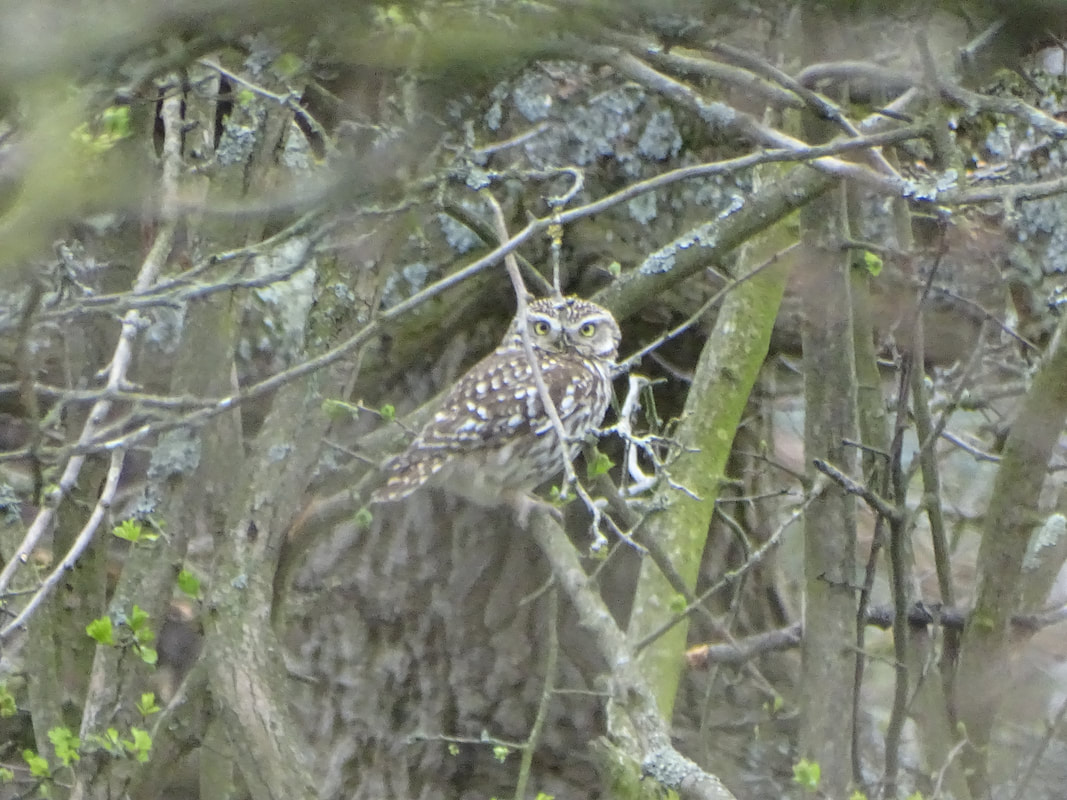


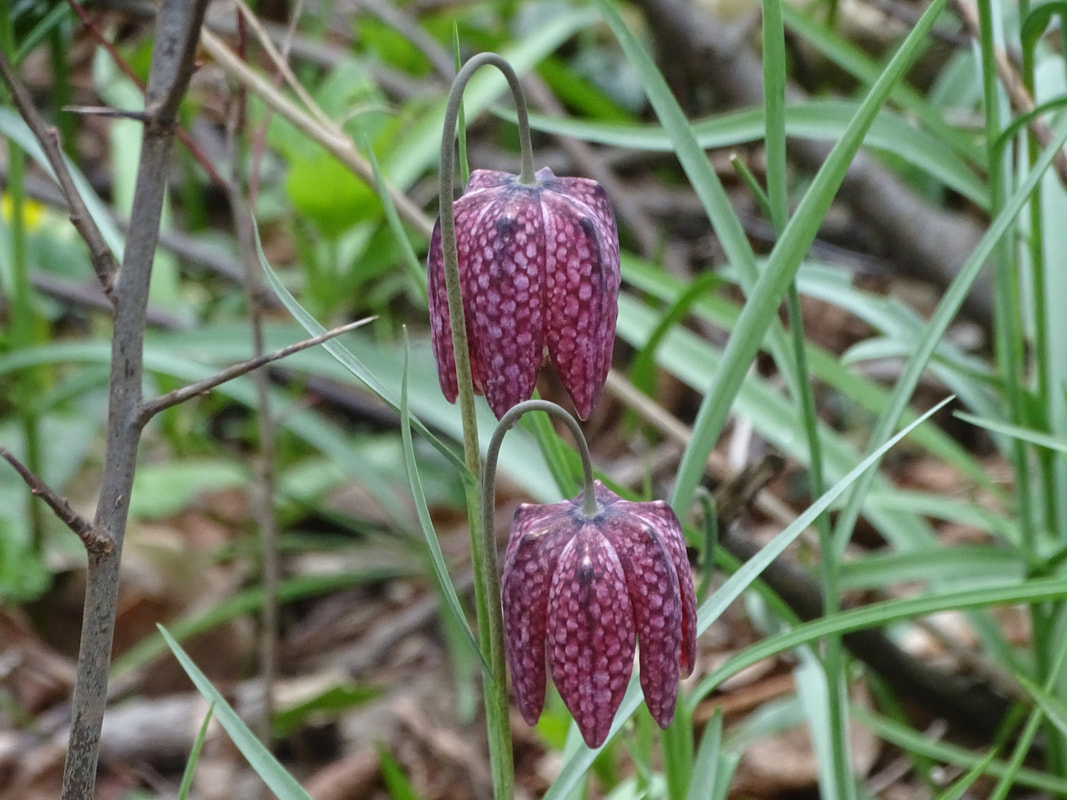

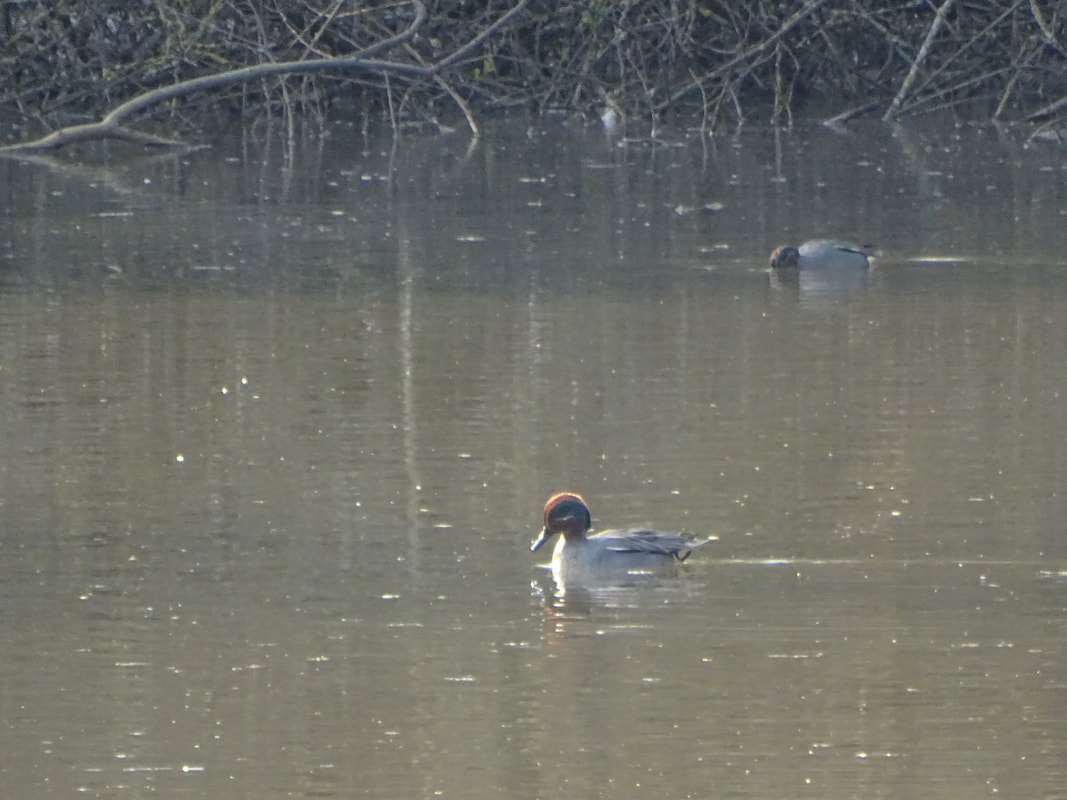


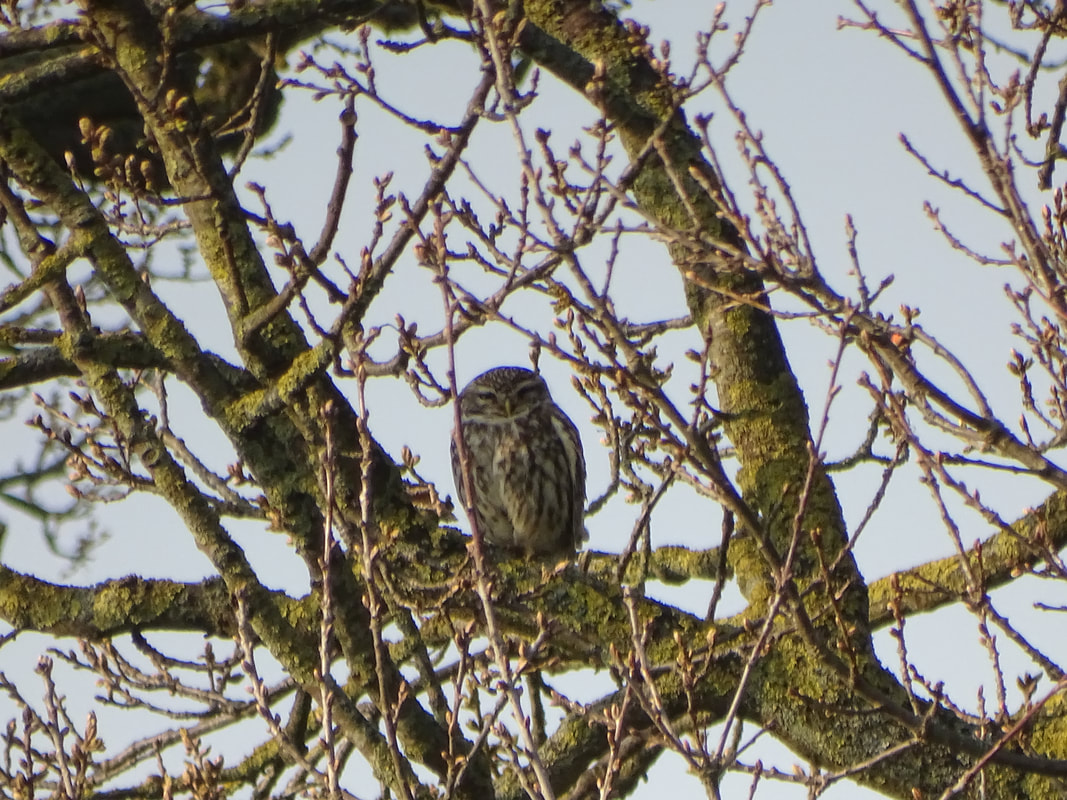























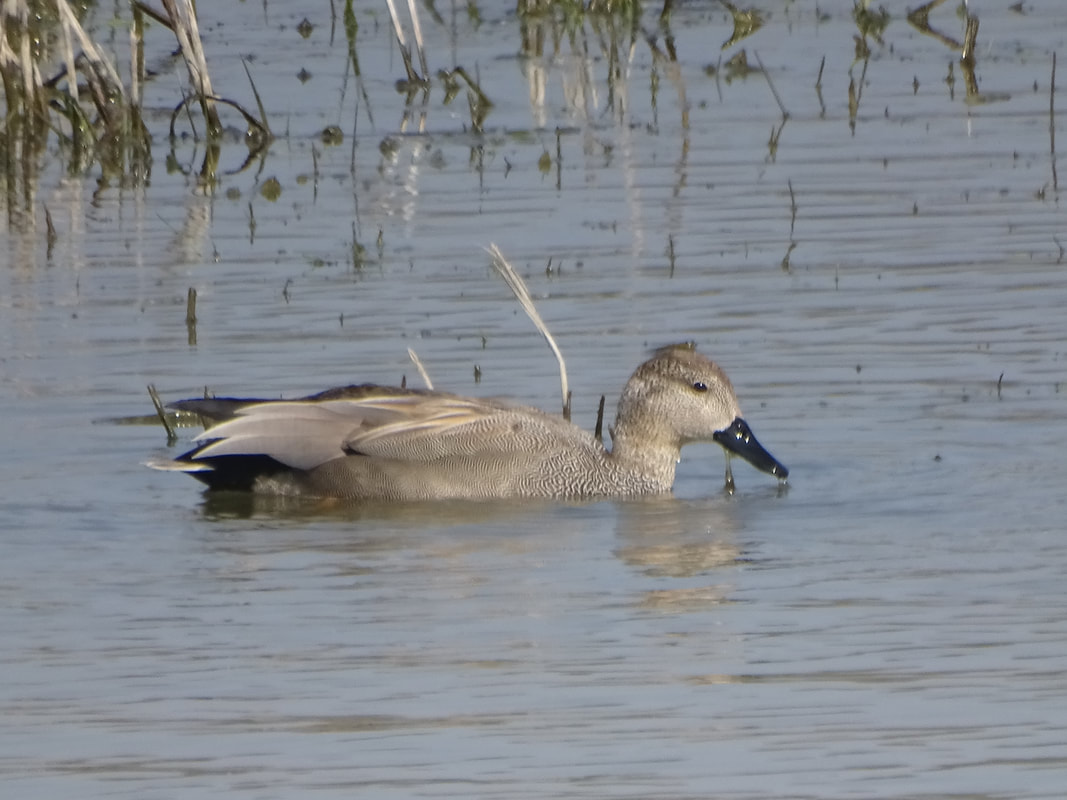





















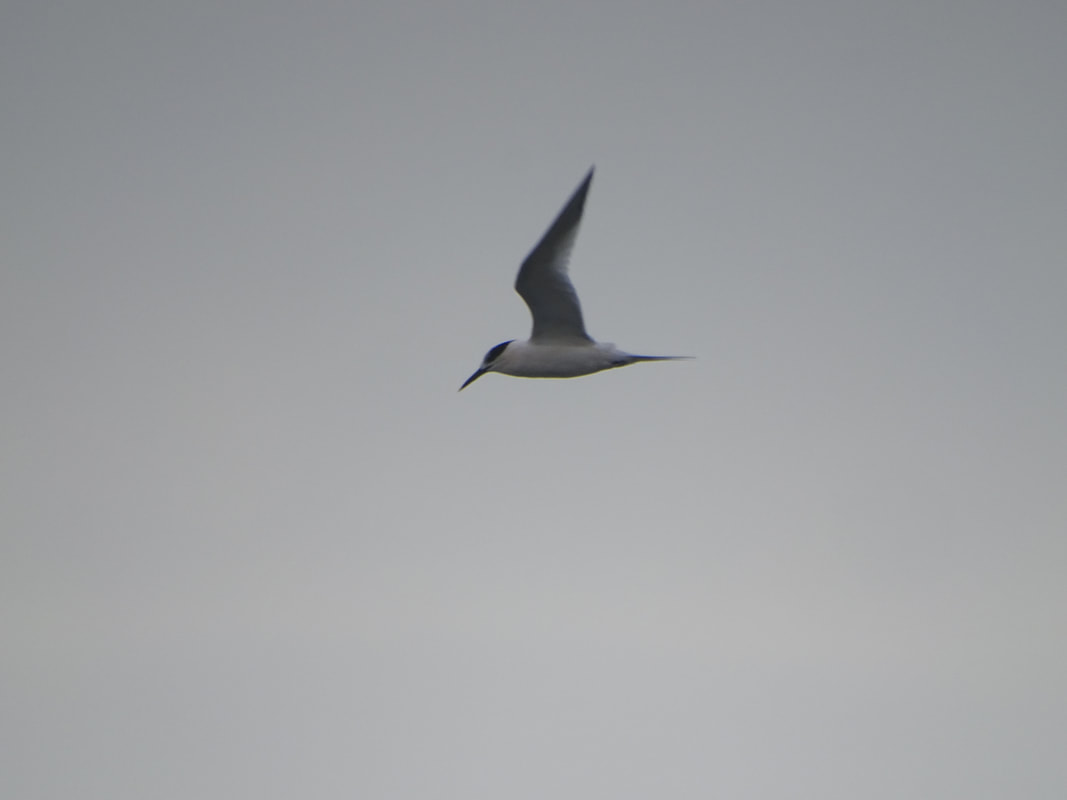





































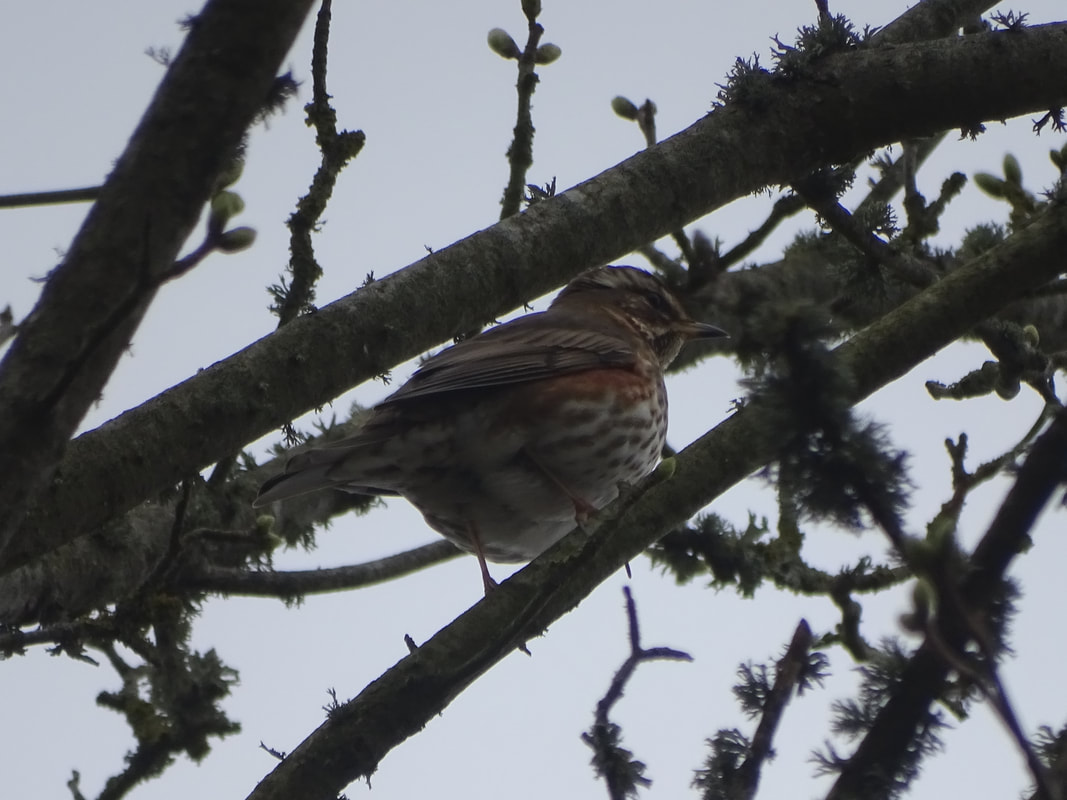








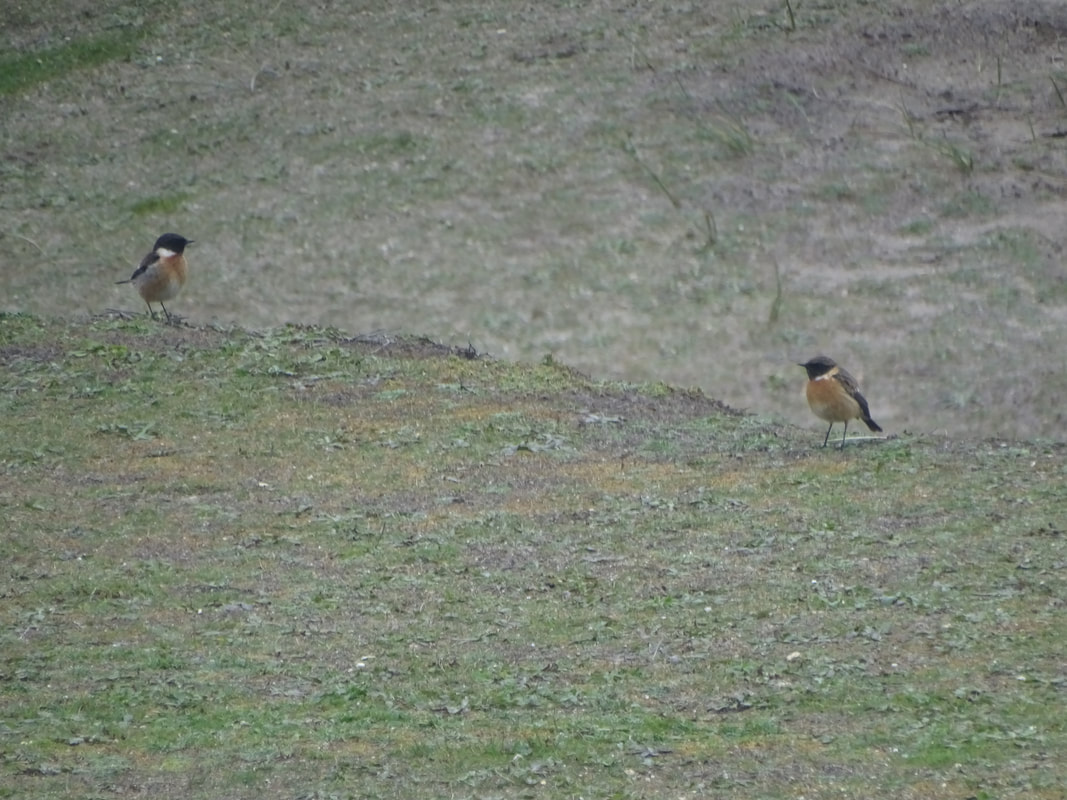







 RSS Feed
RSS Feed
